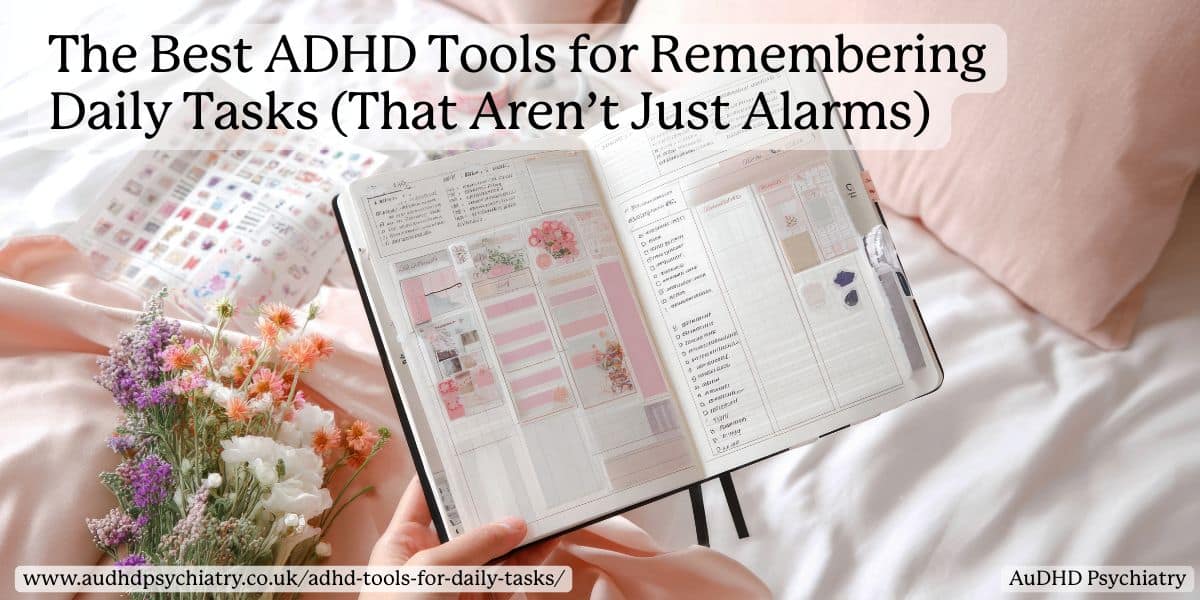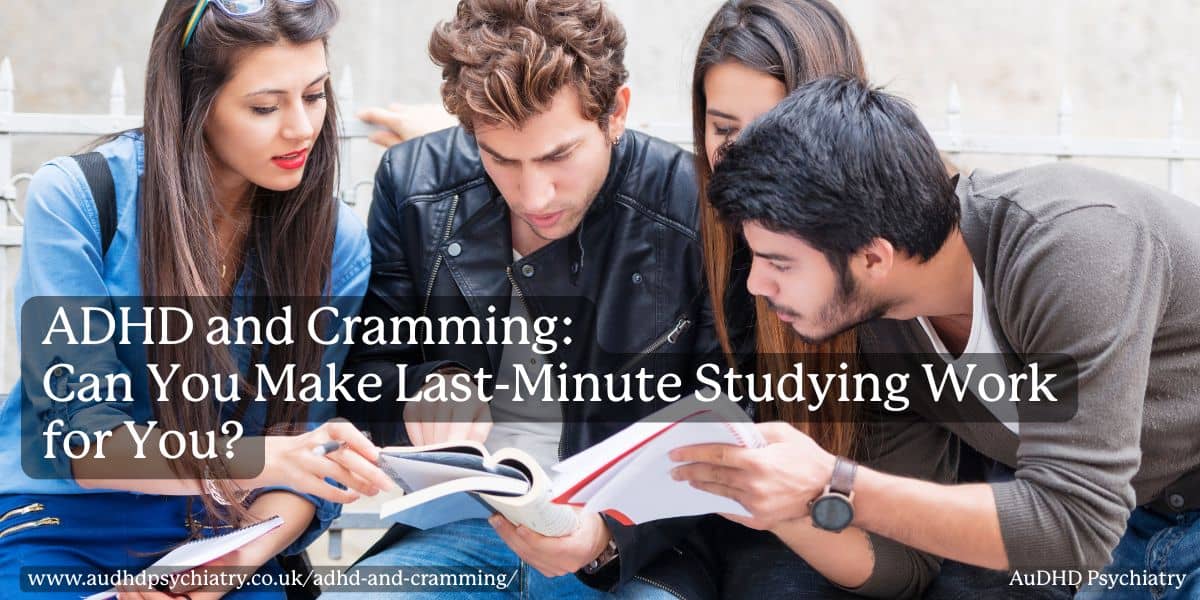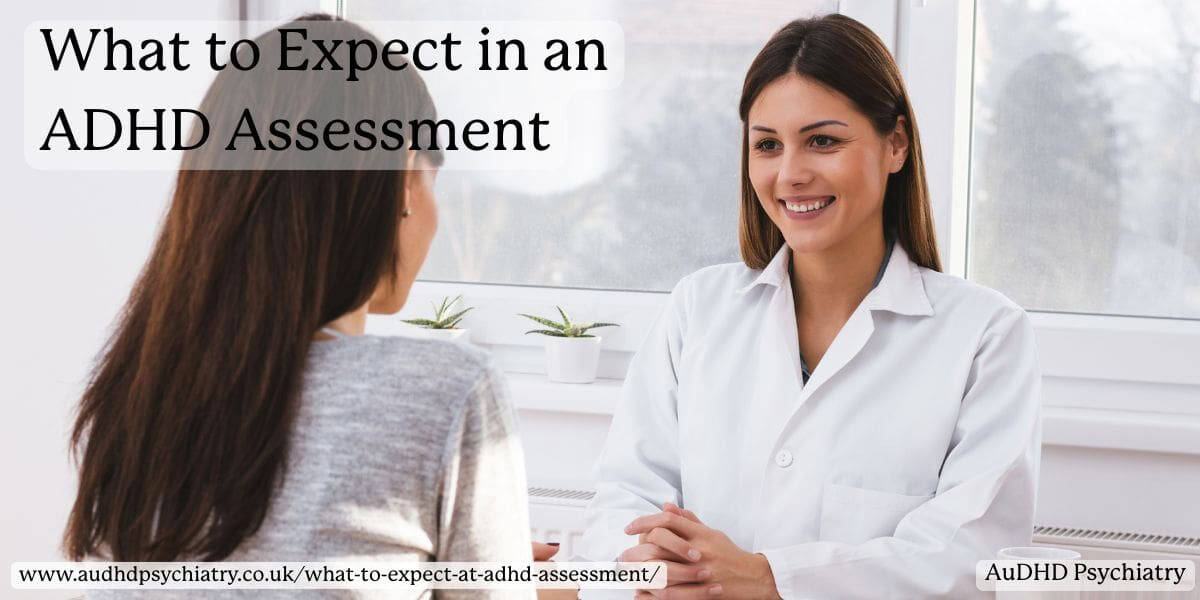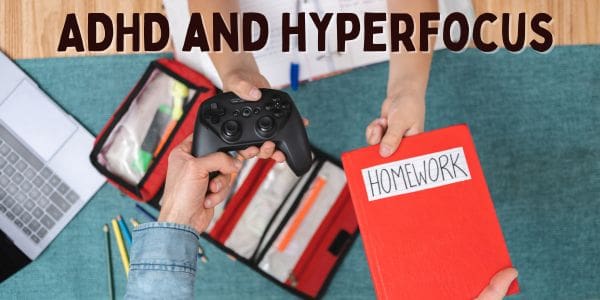
Ever found yourself so deep into a task that you lost track of time, skipped meals, or ignored messages for hours? That’s hyperfocus – and for many people with ADHD, it’s both a strength and a hidden challenge.
ADHD fyperfocus is a term used to describe a state of intense concentration, one where time seems to disappear, distractions fall away, and the mind becomes fully absorbed in a single task. For some individuals with attention deficit hyperactivity disorder (ADHD), it’s a common but often misunderstood experience.
Unlike the usual image of ADHD as constant distraction or impulsivity, hyperfocus reveals a different side of how the ADHD brain works. Rather than struggling to concentrate, individuals may find themselves locked into activities they find stimulating or rewarding, sometimes to the point of missing meals, forgetting appointments, or losing hours without realising it.
In this article, we’ll explore what ADHD hyperfocus really means, how it differs from ordinary concentration, and what current research says about its causes. We’ll also look at how hyperfocus affects daily life, when it can be helpful, and how to manage it when it interferes with your goals or well-being.
If you’re an adult navigating these challenges, structured support such as adult ADHD coaching can also provide strategies to manage hyperfocus and build healthier routines.
What Is Hyperfocus? Definition and Real-World Examples
Hyperfocus is a term often used to describe a state of intense, prolonged concentration in which an individual becomes so absorbed in a task that they lose awareness of their surroundings, time, and basic needs. While the word itself is not exclusive to ADHD, it has become widely recognised within ADHD research and lived experience as a notable and often misunderstood pattern of attention.
Rather than struggling to concentrate, a person with ADHD may experience the opposite: becoming so engrossed in a particular activity, such as playing video games, editing a creative project, or researching a topic of interest, that it becomes difficult to stop. This state can be productive or problematic, depending on the context and whether other responsibilities are being neglected.
The key characteristic of ADHD hyperfocus is that it tends to occur during tasks that are highly stimulating, novel, or personally rewarding. Unlike typical sustained attention, which is deliberate and flexible, hyperfocus is often automatic and difficult to interrupt once it begins. For many, it leads to losing track of time or skipping meals without realising it.
Hyperfocus vs Hyperfixation: What’s the Difference?
This pattern differs from hyperfixation, a term more commonly used in autism, which refers to a long-term, repeated focus on a particular interest. Hyperfocus, in contrast, describes a temporary but intensely immersive state that may last for hours.
Hyperfocus vs Flow State: Is It the Same Thing?
It also differs from a flow state, which is usually goal-directed and purposeful. In hyperfocus, the individual may not be consciously choosing to engage. The focus happens without intentional effort and is difficult to shift, even when it is no longer useful or appropriate.
Understanding this experience is an important first step in recognising the unique ways that ADHD symptoms can present. If you frequently find yourself losing hours to tasks like gaming or scrolling without meaning to, it may be worth exploring how this pattern fits within broader ADHD-related attention regulation challenges.

Is Hyperfocus a Symptom of ADHD or Something Else?
Although it is not included as a formal diagnostic criterion in the DSM-5, hyperfocus is widely acknowledged by ADHD specialists as a common aspect of the condition. It reflects the brain’s tendency to swing between difficulty maintaining focus and excessive focus on a single task, often beyond one’s control. If you recognise this pattern in your own life and it’s affecting work, studies, or relationships, it may be time to consider a professional private ADHD assessment. A structured evaluation can clarify whether hyperfocus is part of ADHD and guide you toward the right treatment and support.
In ADHD, this happens not because of laziness or avoidance, but because of differences in dopamine regulation. Dopamine is a neurotransmitter that assists in regulating motivation and the brain’s response to rewards. In individuals with ADHD, dopamine transmission tends to be lower or less consistent, which can make it hard to engage with important tasks that are perceived as boring, repetitive, or unstimulating, such as homework, chores, or admin work.
However, when a task provides a sudden or strong dopamine boost, such as playing video games, creating art, or solving a problem, the brain may over-engage with it, resulting in hyperfocus.
This form of attention regulation is often referred to as an interest-based nervous system, meaning that focus tends to follow stimulation rather than importance. This is why someone might be unable to get started on a report but then spend three uninterrupted hours tweaking a spreadsheet or deep-diving into an unrelated topic.
Is hyperfocus unique to ADHD or shared with autism/OCD?
It is important to note that hyperfocus is not exclusive to ADHD. Individuals on the autism spectrum or those with obsessive-compulsive tendencies may also experience intense attention on specific activities or thoughts. However, the nature of these episodes, the motivations behind them, and the ability to redirect attention can vary significantly across conditions.
Can neurotypical people experience hyperfocus?
Even neurotypical people may occasionally experience something similar, such as becoming ‘lost’ in a good book or deeply immersed in a project. However, the key distinction is that in ADHD, hyperfocus tends to be more frequent, involuntary, and difficult to interrupt, even when it starts to interfere with daily responsibilities or well-being.
Recognising hyperfocus as a real and manageable experience can be validating. It can also help guide individuals toward appropriate ADHD support services, especially when attention patterns are disrupting academic, professional, or personal life.
If you relate to this pattern and are curious to learn more, you may want to begin by taking our free ADHD screening test or reading more about how ADHD is diagnosed in adults.
Why Do People with ADHD Experience Hyperfocus?
The experience of hyperfocus in ADHD is best understood through the lens of neurodevelopmental differences, particularly how the ADHD brain manages motivation, task engagement, and reward. While some individuals with ADHD report feeling constantly distracted or disorganised, others, or even the same individuals, describe episodes of extreme concentration when engaging with stimulating or personally meaningful tasks.
One of the key neurological explanations involves dopamine, which influences attention, pleasure, and the drive to complete tasks. In ADHD, there is often a dopamine deficiency in brain regions that control executive functioning, such as the prefrontal cortex.
As a result, tasks that do not provide immediate feedback or internal reward, such as household chores, studying, or planning, may feel mentally inaccessible. On the other hand, activities like gaming, drawing, or researching an area of interest may provide a rapid dopamine release, making it easier to engage with them for long periods of time.

Hyperfocus episodes can also be linked to task switching difficulties. Individuals may struggle to disengage from one activity and transition to another, especially when the new task requires higher effort or carries less immediate satisfaction. This is one reason why many people with ADHD describe becoming “stuck” in a specific task or screen, even when they are aware that time is passing or that other responsibilities are piling up.
Importantly, hyperfocus is not a sign of motivation or willpower. It is a reflection of how the brain filters and responds to information. Understanding this can be helpful for those who feel confused or frustrated by their ability to concentrate deeply on things they enjoy, but not on things they “should” be doing.
Recognising these patterns is the first step in managing them. In the next sections, we’ll explore how hyperfocus affects different age groups, its potential benefits and drawbacks, and how to turn it into a tool rather than a source of stress.
How Hyperfocus Affects Children and Adults
Hyperfocus can manifest differently across age groups, often shaped by environment, expectations, and life stage. While the underlying mechanisms are similar, driven by dopamine regulation, interest-based focus, and executive function, their impact in daily life may vary for children, teenagers, and adults with ADHD.
Children and Young People with ADHD Hyperfocus
In children, hyperfocus can appear during play, reading, or screen time. A child may become so absorbed in building Lego, playing video games, or watching YouTube that they don’t hear their name being called or forget to eat.
Teachers might notice that a child who seems inattentive during lessons suddenly displays excellent focus during art or video game sessions. This inconsistency can lead to confusion or incorrect assumptions about effort or motivation.
The issue is not whether a child can focus. It’s whether they can regulate that focus across different tasks. Hyperfocus may also affect schoolwork, especially if a child spends a disproportionate amount of time on one assignment while ignoring others, leading to missed deadlines or imbalanced progress.
How Hyperfocus Impacts Adults with ADHD
For adults, hyperfocus episodes can interfere with work-life balance, time management, and relationships. Many adults with ADHD report becoming “locked in” to work projects or hobbies, spending hours perfecting details or researching a topic without realising how much time has passed. While this can sometimes boost productivity, it can also result in neglected emails, missed meetings, or tension with colleagues and partners.
At home, hyperfocus may lead someone to spend an entire evening organising music playlists or scrolling social media, only to realise they’ve skipped dinner or forgotten to prepare for the next day.
Understanding how hyperfocus differs across the lifespan can help parents, educators, and professionals provide more tailored support. If you’re concerned about how this shows up at work, our guide on managing ADHD in the workplace offers helpful strategies.

ADHD Hyperfocus Symptoms to Watch Out For
Although hyperfocus can be productive, it can also become dysfunctional, especially when it starts to interfere with basic needs, relationships, or daily responsibilities. Recognising the signs of ADHD hyperfocus is key to managing its impact.
Common signs you’re in a hyperfocus episode:
- You lose track of time and are surprised by how much time has passed
- You skip meals, ignore messages, or forget appointments
- You feel irritable or resistant when interrupted
- You struggle to switch to a different task, even when you know you should
- You focus on how you’re doing something, not whether it’s still the best use of time.
These signs often occur when someone is engaging in a stimulating task, like playing games, editing videos, or working on creative projects, especially if they provide frequent rewards or emotional satisfaction.
When Hyperfocus Crosses into Obsession
Sometimes, hyperfocus can resemble obsessive behaviour, particularly when attention becomes fixated on a person, idea, or outcome. For example, someone may replay a conversation repeatedly, endlessly research a topic without action, or constantly refresh social media. While this isn’t the same as OCD, the overlap can be confusing.
Unlike hyperfixation, which tends to persist over longer periods (and is more associated with autism), ADHD hyperfocus usually occurs in intense, short-lived episodes. But in both cases, the challenge lies in regulating attention — not just sustaining it.
Individuals experiencing emotional burnout, relationship challenges, or anxiety after hyperfocus episodes are encouraged to explore support. Cognitive strategies, coaching, or even environmental adjustments can help recognise early signs and gently redirect attention. In a later section, we’ll discuss more strategies for managing hyperfocus.
The Pros and Cons of Hyperfocus
Hyperfocus is often described as one of ADHD’s most contradictory traits. On the one hand, it can be a powerful productivity tool, but on the other, it can lead to significant stress or imbalance if not recognised and managed.
Benefits of Hyperfocus in ADHD
When directed toward meaningful goals, hyperfocus can lead to:
- Exceptional creativity in design, writing, or music
- Deep problem-solving and attention to detail
- Rapid skill development in areas of interest
- The ability to stay immersed in a task for extended periods of time
This is why some individuals with ADHD thrive in fast-paced or creative roles that allow for self-directed work and accommodate interest-based attention.
The Challenges of Unmanaged Hyperfocus
Despite these strengths, the drawbacks of hyperfocus are real. Individuals may:
- Miss meals, sleep, or hygiene routines due to time blindness
- Burnout from long, unbroken stretches of mental exertion
- Struggle with neglected priorities, such as bills or errands
- Experience guilt or anxiety when hyperfocus derails plans
The inconsistency of focus can also harm self-esteem. People may wonder, “If I can focus so well on games or art, why can’t I do something simple like check my inbox?” This cycle can fuel internalised frustration or shame.
Understanding that hyperfocus is not a choice but a response to internal reward pathways can help reframe this experience. With the right awareness and tools, hyperfocus can be transformed from a challenge into a constructive asset.
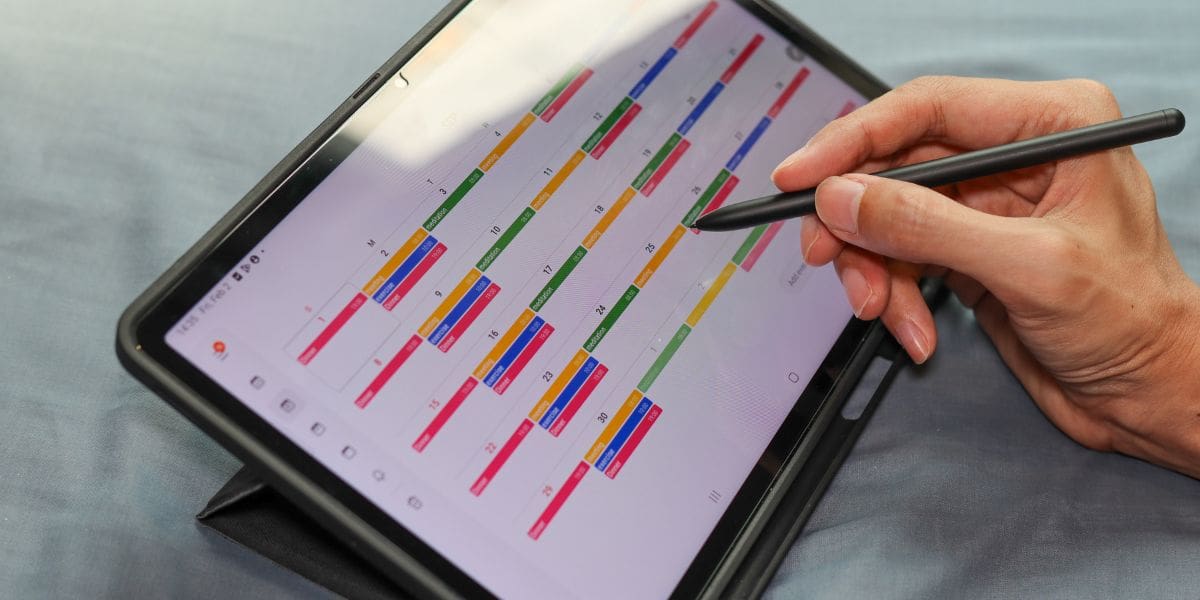
Strategies and Tools to Manage ADHD Hyperfocus
While hyperfocus can feel unpredictable, there are ways to manage it effectively, especially once you understand your personal patterns and triggers. When left unchecked, hyperfocus may interfere with everyday responsibilities. But with the right tools and structure, it’s possible to maintain awareness, stay on track, and prevent unintentional overcommitment to a single task.
How to Manage Hyperfocus in Children and Adults
Management begins with awareness. Start by recognising the kinds of tasks, environments, and times of day when you or your child are more likely to enter hyperfocus mode. These patterns can differ widely. Some people hyperfocus at night, while others find it happens only when they’re alone or under pressure.
For children, try using external cues like timers, gentle interruptions, or pre-agreed break points to keep tasks within manageable boundaries. For adults, visual planners, time-blocking, and accountability systems can make it easier to detect and exit a hyperfocus state before it becomes disruptive.
Techniques and Tools to Stay Grounded
Here are some tools and strategies you might find helpful:
- Set time limits using apps like Forest, TimeTimer, or Pomofocus
- Use reminders and alarms; auditory prompts can break the spell
- Create transitions between tasks (e.g., a short walk before switching activities)
- Establish clear goals before beginning a task to avoid drifting into unplanned deep focus
- Consider working with an ADHD coach to create personalised strategies
Even minor changes to your workspace or routine can have an impact. Some individuals find that using music, white noise, or visual timers helps create a more intentional working rhythm. Here are some more ADHD resources and tools you might want to try.
If you’re supporting a child or family member with ADHD, fostering an open conversation about how hyperfocus feels and when it becomes unhelpful can lead to more productive routines and can become a powerful tool to help reduce stress in managing it.
Understanding the importance of structure brings us to the next step: how to channel hyperfocus positively when it does appear.
Using ADHD Hyperfocus to Your Advantage
Once you’ve learned to recognise the signs of hyperfocus and interrupt it when necessary, the next step is learning how to harness it in ways that support your goals. When used purposefully, hyperfocus can be an incredible tool for creativity, deep learning, and meaningful work.
Rather than viewing hyperfocus as a flaw to fix, many people with ADHD benefit from embracing it as a part of how their brain works and working with it instead of against it.

Identify What Sparks Your Hyperfocus
Start by identifying what tasks naturally absorb your attention. Is it problem-solving, visual design, storytelling, or gaming-related systems? Understanding this can help you design your workday or learning schedule to encourage productive immersion while setting boundaries for other tasks.
If you’re a student or working professional, this might mean scheduling high-focus tasks at times when you’re more likely to get “locked in” and saving less engaging admin work for when your energy dips.
Build Workflows That Support Sustainable Focus
To make hyperfocus work for you:
- Use task lists with clear priorities to avoid fixating on the wrong detail.
- Schedule check-in breaks (e.g. every 90 minutes) to evaluate whether to continue.
- Align personal projects with your core interests, which may naturally engage your ADHD brain.
- Combine structured routines with flexibility; build scaffolding without forcing rigidity.
Hyperfocus becomes most valuable when you can exit the state on purpose. Developing self-awareness, learning to notice when you’re entering hyperfocus, and preparing ahead of time with goal-setting can help you stay in control.
This brings us to a practical conclusion: hyperfocus is not something to eliminate. It’s something to understand, direct, and support with the right strategies.
ADHD and Hyperfocus: Final Thoughts and Next Steps
For many people with ADHD, the ability to enter a state of hyperfocus can feel like both a gift and a burden. It’s one of those experiences that sets ADHD brains apart, revealing just how differently attention can be regulated depending on context, interest, and environment.
While recent studies have shown a sizable prevalence of hyperfocus among people with ADHD, it’s still not widely recognised in everyday conversations about symptoms of ADHD. Yet, the link between dopamine release, intense concentration, and engaging in a particular task continues to emerge across pilot samples, self-reports, and evolving clinical understanding.
Hyperfocus isn’t simply about being easily distracted or unusually focused. It’s about how individuals with ADHD engage with various activities in different ways. Whether you’re a parent of younger kids who become absorbed in screen time, or an adult who can dive into work for hours but struggles to manage school work or admin, these patterns offer meaningful clues about how your attention system operates.
Recognising experiences of flow, patterns of inattentive ADHD, or episodes where you lose time to irrelevant information can help you gain self-awareness and set the stage for positive change. Learning to work with your natural focus style, rather than against it, can turn hyperfocus into an ADHD superpower.
If this article resonates with your lived experience, the first step is to seek clarity. You may benefit from a professional ADHD diagnosis designed to go beyond surface-level symptoms and help you understand how your brain processes attention and motivation.
Whether you’re looking for support, validation, or practical guidance, we’re here to help. You can book a private ADHD assessment with us today and start accessing expert advice, treatment options, and the tools you need to thrive.
You Might Also Like
Contact Us
We’re here to answer any questions you might have.
Get in Touch
Opening Hours
Contact Form
We’re here to help. Reach out and we’ll get back to you within 24 hours (Monday – Friday).

